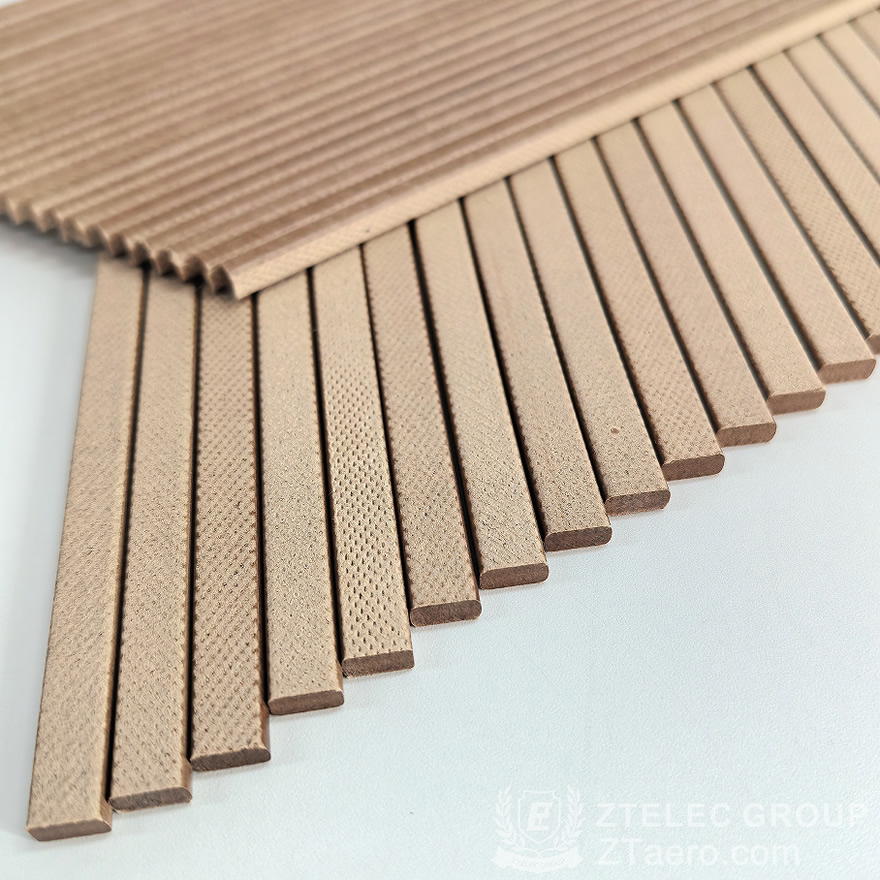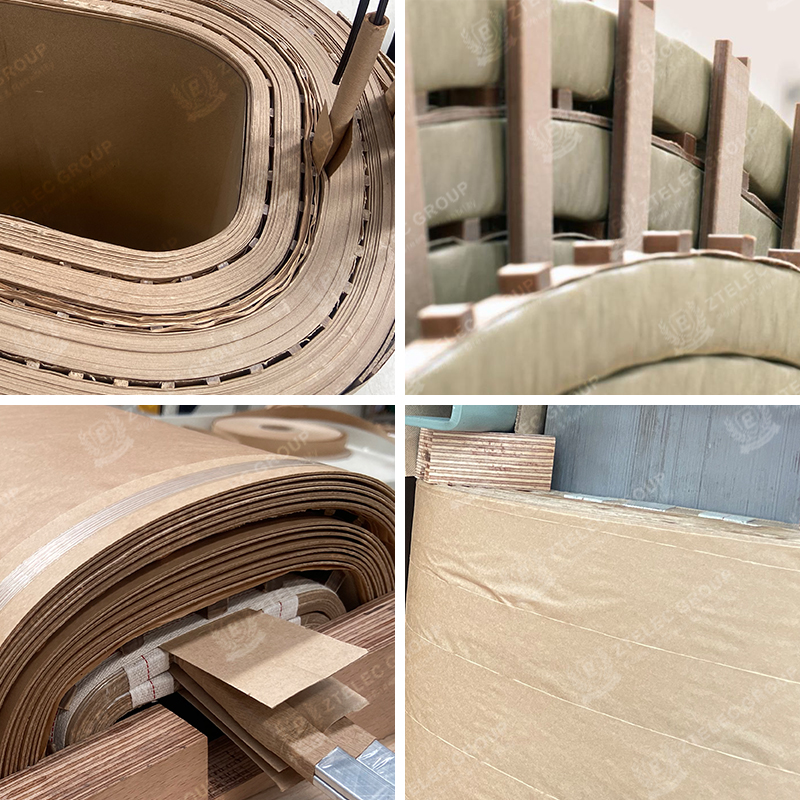Product Introduction Transformer pressboard spacers are critical insulating components used in oil-immersed tr...
Transformer pressboard spacers are critical insulating components used in oil-immersed transformers, primarily made of insulating laminated pressboard (e.g., T4, T3 grades). The raw material is sulfate wood pulp, processed under high temperature and pressure to form a dense structure. These spacers are typically elongated strips with rectangular or trapezoidal cross-sections, often featuring chamfered or rounded edges to minimize electric field distortion and enhance insulation reliability. They are precisely positioned between winding layers, windings, and the core, serving three key functions: insulation, heat dissipation, and mechanical support.

Electrical Performance
Dielectric strength ≥10 kV/mm (in oil), volume resistivity >10¹² Ω·cm, ensuring insulation safety under high voltage.
Mechanical Performance
Compressive strength >100 MPa, elastic modulus ≥5 GPa, capable of withstanding electromagnetic forces up to tens of kN/m² during short-circuit events.
Thermal Stability
Long-term tolerance: 105°C (Class A) or 120°C (Class E); short-term overload capacity: 140°C (2 hours); thermal shrinkage <0.5%.
Oil Resistance
Swelling rate <3% and oil absorption <5% after immersion in mineral oil, preventing deformation-induced insulation failure.
Environmental Adaptability
Silane-treated versions resist moisture (weight gain <2% at 95% humidity); specialized coatings prevent corona erosion.
Oil-Immersed Transformers
Interlayer Winding Support: Typical spacing 30-50 mm, thickness 2-6 mm, forming axial oil ducts (3-8 mm wide) to improve heat dissipation by 15%-30%.
Winding End Fixation: L-shaped spacer assemblies with preload design to prevent axial displacement.
Core Insulation Isolation: Spacer groups (10-20 mm thick) withstand core vibration acceleration >5g.
Dry-Type Transformers
Use epoxy-impregnated pressboard with arc-resistant coatings (e.g., Al₂O₃), suitable for Class F/H insulation systems.
Specialty Transformers
Mica-reinforced composite pressboard in furnace transformers (temperature resistance up to 180°C); high-density pressboard (≥1.25 g/cm³) in converter transformers to withstand harmonic vibrations.
High-Voltage Reactors
Multi-layer staggered spacer structures enable segmented oil gap designs for optimized electric field distribution.

Material Selection
Standard voltage (≤110 kV): T4 pressboard (density 1.15 g/cm³);
Ultra-high voltage (≥220 kV): High-density pressboard (≥1.25 g/cm³) or Nomex® composite boards (220°C rated).
Dimensional Design
Thickness tolerance ±0.05 mm, meeting: thickness ≥0.1×radial winding dimension and ≥3 mm;
Width based on oil duct design: width ≥0.6×oil flow velocity (m/s)×spacer spacing (mm).
Electrical Parameter Matching
Operating field strength ≤3 kV/mm (oil gap), spacer field strength ≤8 kV/mm;
Creepage distance: ≥1.5×rated voltage (kV) in mm.
Mechanical Verification
Compression deformation test: Residual deformation <2% after 1.5×design pressure (typically 50-100 N/mm²);
Vibration test: Passes 20-2000 Hz sweep with amplitude ≤50 μm.
Special Environment Adaptation
High altitude: Increase spacer height by 10% per 1000 m elevation;
Humid regions: Use anti-mold pressboard with 2% boric acid.
Raw Material Testing
Ash content ≤0.8%, moisture content 5%±1% (per GB/T 1927 standard).
Process Control
Hot pressing: 160-180°C under 2-4 MPa pressure for 30-60 minutes;
Edge chamfering precision: R-angle tolerance ±0.1 mm (laser cutting).
Testing Requirements
Partial discharge <5 pC (at 1.5Ur);
Post-oil-resistance test (100°C/48h): Tensile strength retention >90%.
| Parameter | Standard Type | Ultra-HV Type | High-Temp Type |
|---|---|---|---|
| Density | 1.15 g/cm³ | 1.28 g/cm³ | 1.18 g/cm³ + coating |
| Dielectric Strength | 12 kV/mm | 15 kV/mm | 10 kV/mm |
| Heat Deflection Temp | 130°C | 150°C | 200°C |
| Typical Dimensions | 3×20×1200 mm | 5×30×1500 mm | 4×25×1000 mm |
| Voltage Application | 35-110 kV | 220-500 kV | Class H Dry-Type |
ZTelec Group is a professional manufacturer of high-quality electrical insulation materials, integrating the research and development, production and sales of electrical and electrical insulation materials. It has more than 65 years of manufacturing experience. The production capacity and market share of insulation materials are ranked top three in the industry, and special insulation materials are ranked first. Products are exported to Europe, America, Southeast Asia and other countries and regions.
If you need to know more about phenolic resin sheets and other insulation materials product information and quotations,
please contact us, we can mail you samples for your testing
Welcome to visit our factory for guidance.
If you are interested in our products,, please send us a message and we will contact you as soon as we receive it. Email: info@ztaero.com whatsApp: +8616650273778